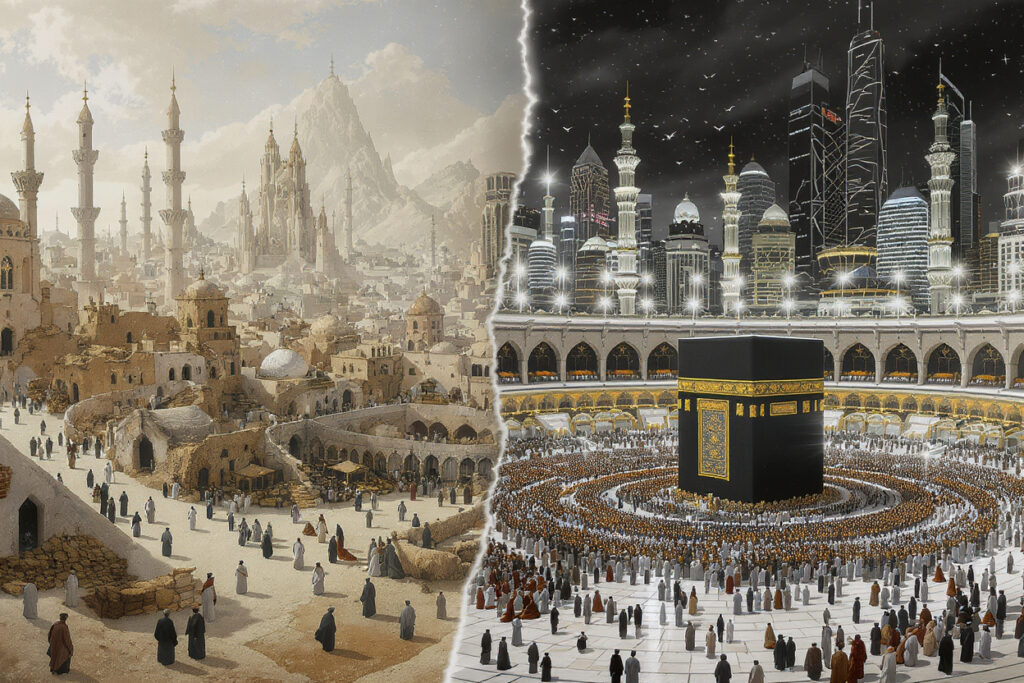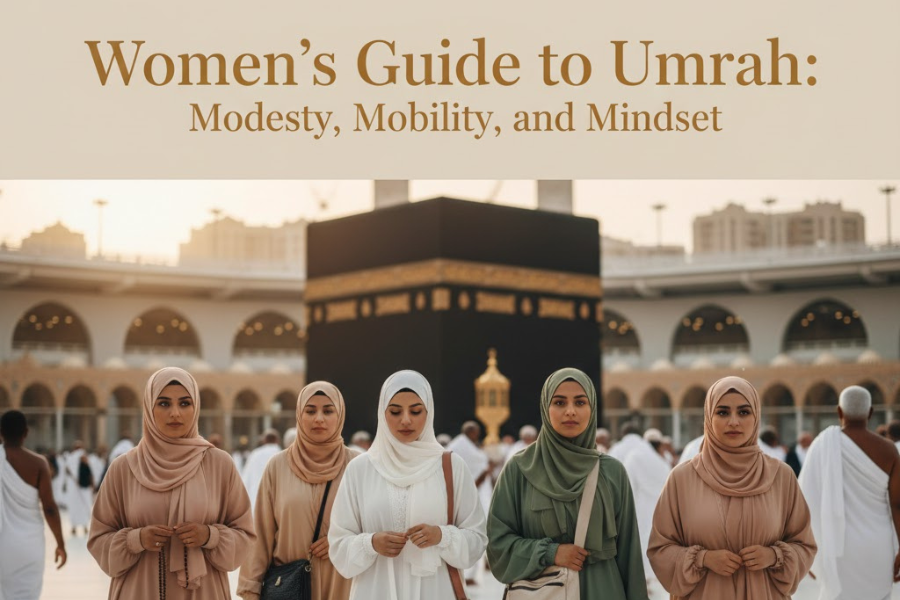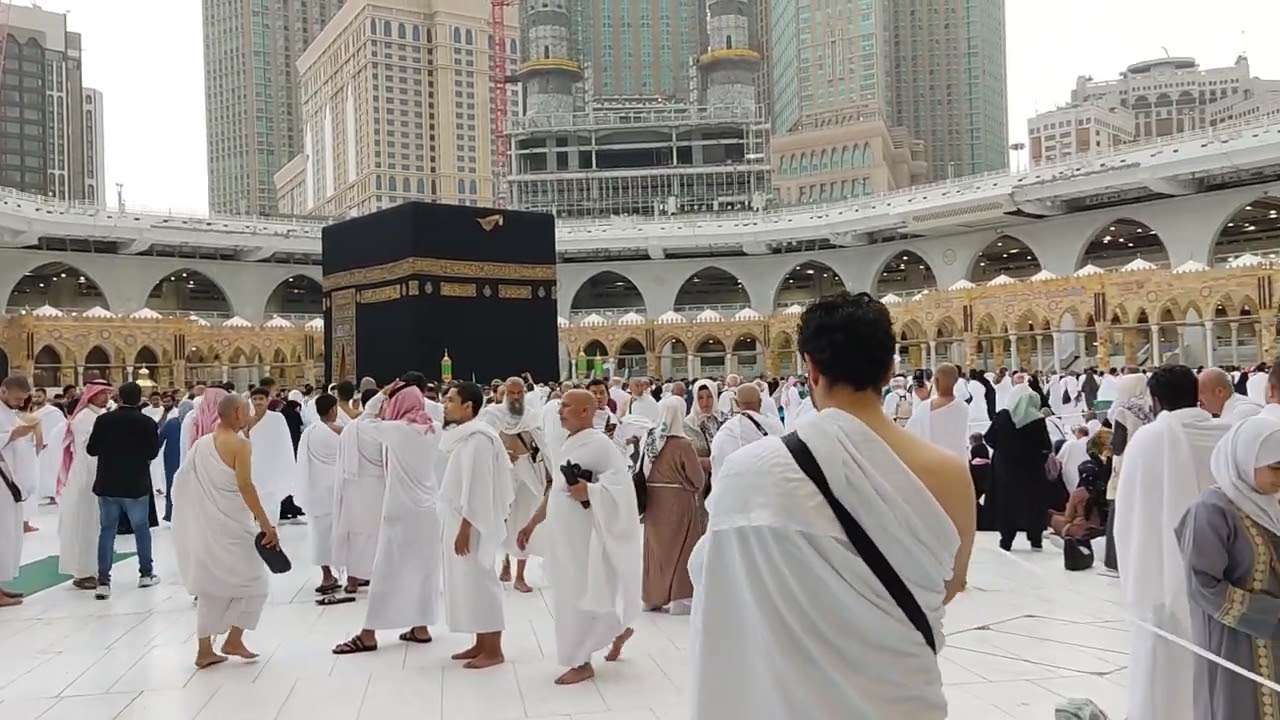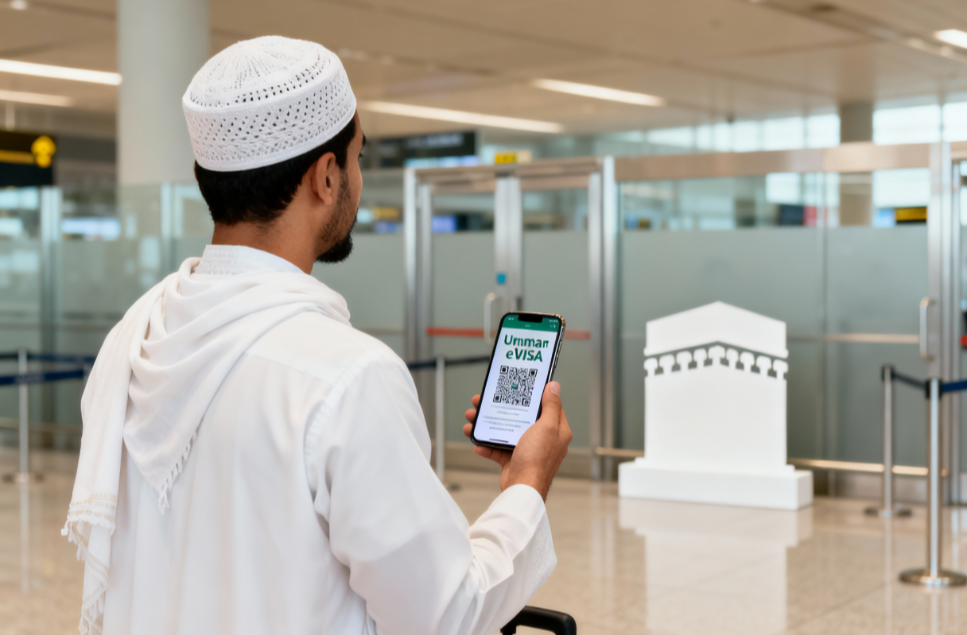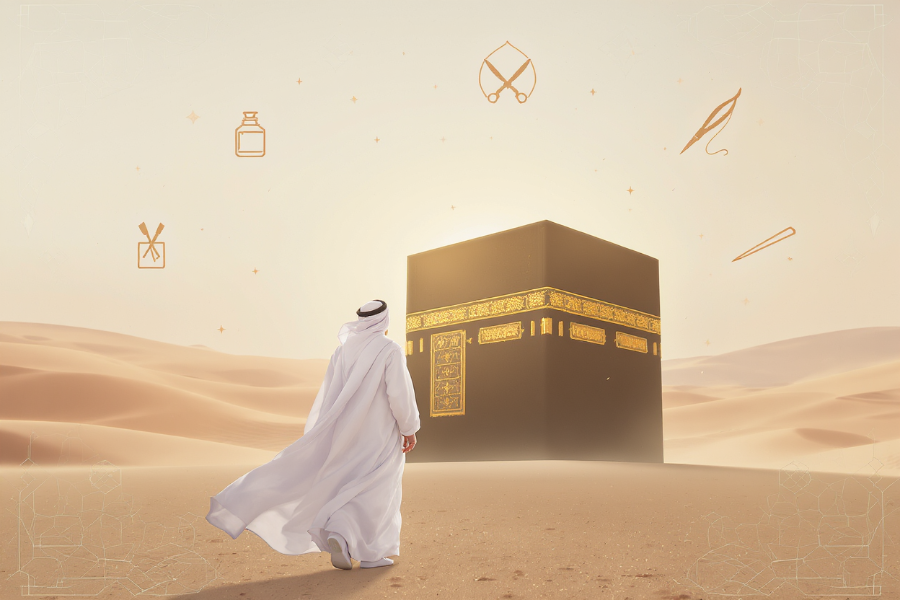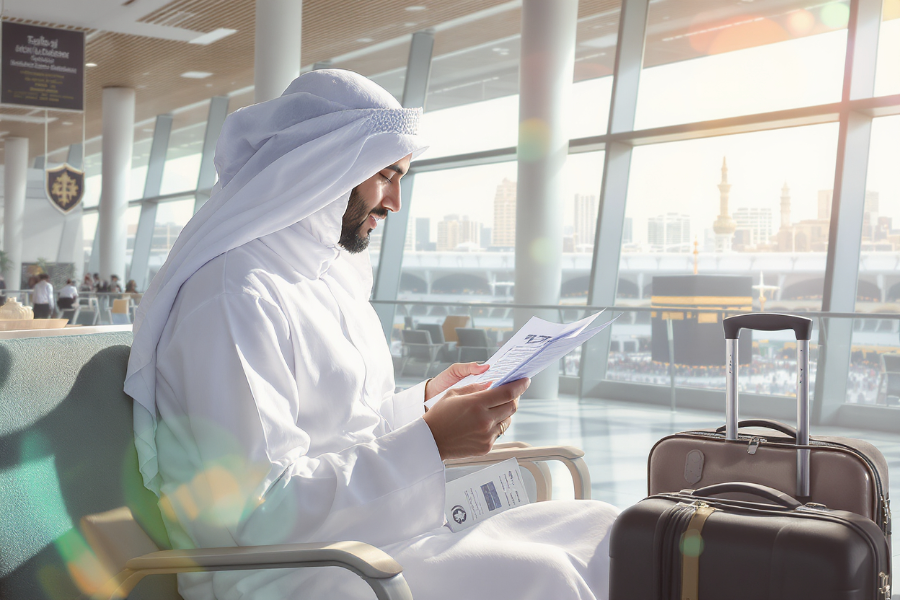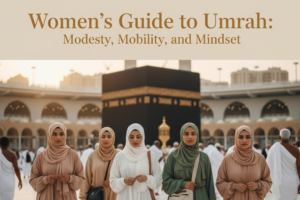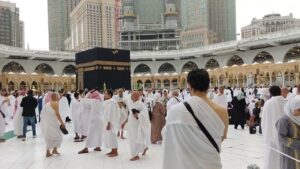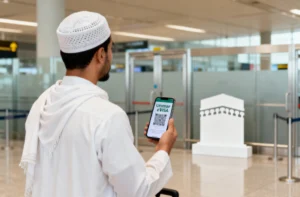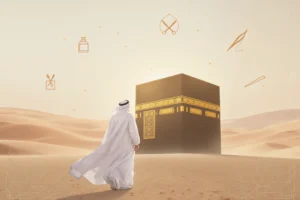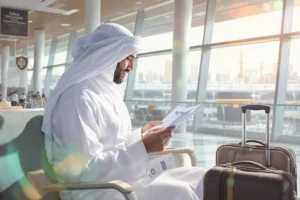Makkah stands at the center of Islamic history, spirituality, and identity. It is one of the oldest continuously inhabited cities on earth, and its story stretches across thousands of years. Every year, millions of Muslims visit this sacred land with love in their hearts and prayers on their lips. But many people do not realize how deeply the city has transformed from its earliest days to the present.
Over time, Makkah changed in appearance, structure, and scale, yet its spiritual importance did not diminish. The meaning of the city remains rooted in faith and devotion, even as buildings, roads, and technology reshape the landscape. Understanding these changes helps us appreciate both the heritage that shaped Makkah and the modern developments that support today’s pilgrims, especially those planning their spiritual journey through Ramadan Umrah Packages 2026.
What Makkah Was in the Early Ages
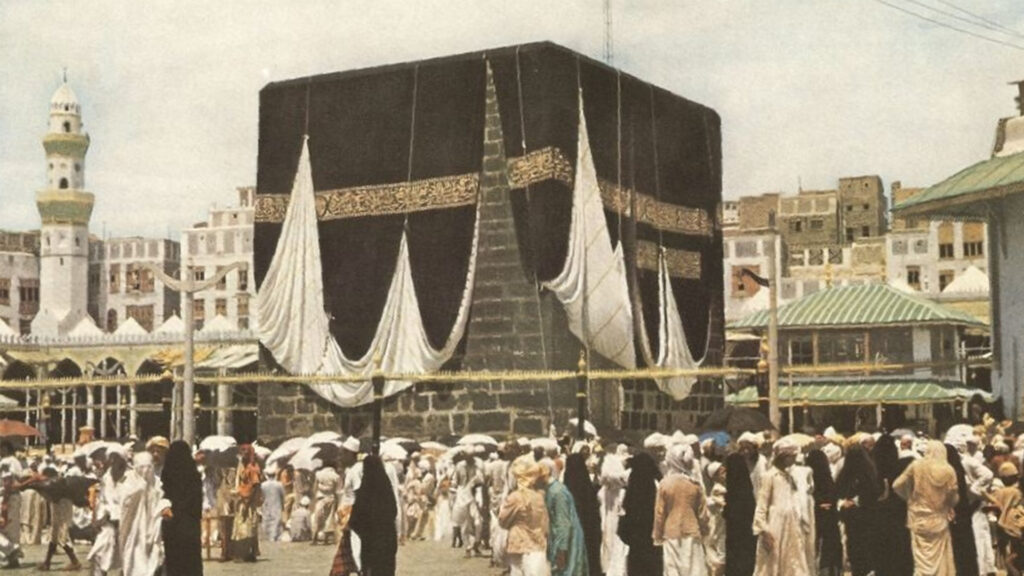
Makkah began as a quiet desert valley, surrounded by mountains and far away from major settlements. Before the arrival of Prophet Ibrahim, the region had no water, no homes, and no communities. When Hajar and her infant son Ismail were left in this valley, they faced a barren land without any sign of life. The miracle of Zamzam transformed the valley forever and drew passing tribes toward settlement.
As time passed, the small community around Zamzam grew into a stable settlement. The tribe of Jurhum and later the Quraysh oversaw the city and protected the Kaaba. Makkah became a center for trade caravans because of its strategic location on routes linking Yemen, Syria, and the Gulf. Although the city was still simple and modest, its role as a religious and commercial center was increasing.
The Development of Makkah Before Islam
Long before the message of Islam spread, Makkah already had a diverse population visiting during pilgrimage seasons. The Kaaba was central to worship, though the pre-Islamic Arabs had shifted from pure monotheism to idol worship. Each tribe had its own practices and rituals, but the city was still seen as a protected and blessed valley.
The Quraysh tribe, especially Hashim and his descendants, added structure and organization to the city. They managed trade agreements, developed hospitality traditions for pilgrims, and ensured the Kaaba remained a respected sanctuary. These early administrative steps made Makkah a safe, busy, and thriving place long before large buildings or paved roads existed.
Makkah at the Time of the Prophet
The arrival of Prophet Muhammad marked a turning point in Makkah’s history. His message challenged the traditions of idol worship and called people back to the monotheism of Ibrahim. The city during this era was still small, with narrow pathways, simple stone homes, and markets filled with merchants.
After years of persecution and struggle, the Prophet returned to Makkah as a victorious leader. The Kaaba was cleansed of idols, and the city reentered a new era of spiritual purity. Simplicity remained the defining feature of Makkah, yet its influence expanded across the world as Islam spread. During this time, the rituals of Hajj and Umrah took the form that Muslims practice today.
Makkah in the Early Islamic Caliphates

As Islam grew, Makkah became a destination for travelers, scholars, and seekers of knowledge. Caravan routes became busier, and small rest houses supported visitors. The city remained peaceful and spiritually vibrant, even though political control shifted among the Umayyads, Abbasids, and later Muslim dynasties.
Makkah in the Ottoman Era
The Ottoman Empire played a major role in shaping early infrastructure in Makkah. They invested in the maintenance and protection of the Haram, built new minarets, and created systems to control crowd movement. The Ottomans also improved traditional water sources and developed the Hijaz Railway, which made travel easier for pilgrims from far regions. These historical improvements still inspire modern facilities offered in the Best 5 Star Umrah Packages that focus on comfort, accessibility, and a smooth pilgrimage journey.
During this period, the city grew in size but still looked nothing like the modern Makkah we see today. Houses remained low and simple, built with stone and clay. Streets were narrow, and the Haram itself could only hold tens of thousands of people, a small number compared to modern capacity.
Makkah Before the Modern Expansion
By the early 20th century, Makkah was becoming more connected to the outside world. New travelers arrived by sea, and road networks started forming. The population increased, and as the number of pilgrims grew, the need for more organized services became clear.
Electricity replaced old oil lamps, and early construction projects reshaped parts of the city. Yet the transformation was still slow and modest because major expansion required planning, funding, and long-term strategy.
Makkah in the Saudi Era

When Saudi leadership took responsibility for the two holy mosques, the scale of development changed dramatically. A new vision for Makkah emerged, focusing on supporting millions of pilgrims safely and comfortably. The expansions that followed were the largest in the city’s entire history.
New buildings, hotels, and roads appeared. Medical facilities, transportation systems, and safety networks grew rapidly. The goal was clear: ensure that every visitor could perform worship with ease, security, and spiritual focus. Over the decades, the Haram grew from a spacious open courtyard into a massive complex capable of hosting millions at once.
The Transformation of the Haram
One of the most significant changes in modern Makkah is the continuous expansion of Masjid al-Haram. Additional floors, new gates, cooling systems, and wide pathways changed the experience of pilgrims. The mataaf area around the Kaaba expanded many times to allow smooth tawaf even during peak seasons.
The introduction of multi-level tawaf, modern ventilation, and advanced crowd management transformed how worship is performed. Today, the Haram is one of the most technologically advanced religious spaces in the world. Despite these changes, the Kaaba remains exactly where it has always been, preserving the sacred center of worship.
Modern Architecture and the Changing Skyline
Anyone comparing old pictures of Makkah with today’s view will notice the dramatic change in the skyline. The famous clock tower, modern hotels, and tall buildings surround the Haram and offer accommodation for millions of visitors each year. These developments reflect the city’s role as a global pilgrimage center.
While the tall structures contrast with Makkah’s ancient simplicity, they serve practical needs. Pilgrims need safe housing, clean facilities, medical access, and reliable transportation. The new architecture supports these essential services while allowing pilgrims to stay close to the Haram.
Technology and the Pilgrimage Experience
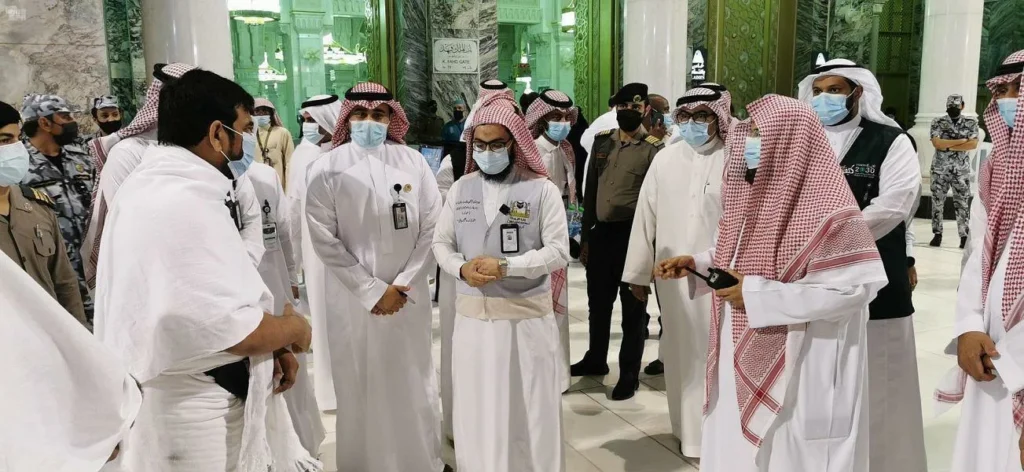
Modern technology has improved almost every part of pilgrimage life. Pilgrims now use digital apps for navigation, prayer times, fatwa guidance, emergency help, and crowd updates. Smart systems track safety, while thousands of cameras protect visitors throughout the city.
Transportation advancements also support millions of pilgrims. Highways, trains, shuttle buses, and pedestrian pathways make movement easier, especially for international visitors who plan their journeys through options like London Umrah Deals. These changes help prevent overcrowding and reduce the stress that earlier generations experienced.
What Makkah Represents Today
Even with all the modern additions, Makkah remains a city of faith, unity, and spiritual peace. People from every country and background gather in this place with the same hope and devotion. The Kaaba still stands as a symbol of Tawheed and a reminder of the legacy of Ibrahim, Ismail, and the Prophet Muhammad.
This combination of ancient spirituality and modern support makes Makkah unique. The city reflects both history and progress, reminding Muslims of their roots while ensuring their safety and comfort.
Why Makkah’s Transformation Matters
Understanding how Makkah changed over time helps Muslims appreciate the effort behind today’s pilgrimage experience. The city’s evolution was not just physical; it was shaped by faith, leadership, community, and a desire to serve the guests of Allah.
Each era added something meaningful. The early tribes preserved the Kaaba, the Prophet restored monotheism, early caliphates improved welfare, the Ottomans strengthened infrastructure, and modern expansions made pilgrimage accessible to the world. This long journey shows that caring for Makkah is a shared responsibility across generations.
Benefits of Studying Makkah’s History
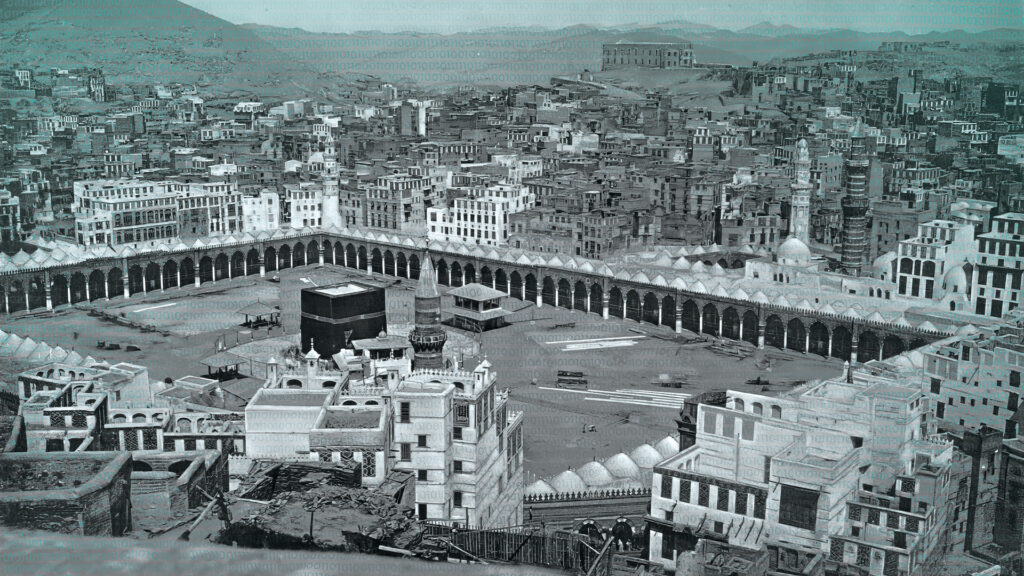
Exploring Makkah’s history allows Muslims to connect with their spiritual heritage. Learning about early challenges, ancient rituals, and past communities deepens admiration for the city. It teaches patience, gratitude, and awareness of how blessed the modern pilgrim experience has become.
Understanding history also builds appreciation for the people who protected, rebuilt, and expanded Makkah over the centuries. Their sacrifices made it possible for today’s pilgrims to visit with ease, comfort, and dignity.
How Makkah Balances Heritage and Modern Needs
One of the most inspiring aspects of Makkah is its ability to balance tradition with innovation. The city never abandons its spiritual identity, even as it evolves. Each expansion project goes through careful religious review to ensure respect for sacred boundaries and rituals.
This balance allows pilgrims to experience both ancient connection and modern convenience. Standing in front of the Kaaba, a person feels the same spiritual emotion that believers felt centuries ago, even though the surroundings look very different.
The Spiritual Continuity of Makkah
Despite the modern world changing rapidly, the spiritual heart of Makkah remains unchanged. The call of the Kaaba draws feelings of humility and devotion. Pilgrims still perform tawaf, sa’i, and prayer just as the Prophet taught. The journey remains personal, emotional, and deeply transformative.
This continuity shows that Makkah is not defined by buildings or technology but by its sacred purpose. It remains a place where hearts soften, prayers rise, and believers remember their connection to Allah.
The Future of Makkah

As the number of pilgrims continues to grow, Makkah will likely see more expansions and digital innovations. Future plans include easier transportation, improved crowd systems, green technology, and further improvements to the Haram. These upgrades aim to serve pilgrims while preserving Makkah’s sacred character.
The city will continue evolving, but the Kaaba will always remain the central point of worship. This balance is essential to keep the spirit of Hajj and Umrah alive for future generations.
Conclusion
Makkah is a city where history meets the present and where spirituality connects people across time. From a simple valley with no water to a global center welcoming millions, Makkah’s journey is remarkable. The sacred city changed in shape and size, but its heart stayed pure.
Its story reminds us that faith endures, traditions continue, and the connection between Muslims and Makkah strengthens through every era.
Sources
- Historic Makkah Documentation Archives
- Saudi Haram Expansion Reports and Urban Development Records
- Field Notes from Pilgrimage Researchers and Historians with Multiple Decades of Study
- Ottoman-era Haram restoration records detail historical renovations of the sacred sites.


